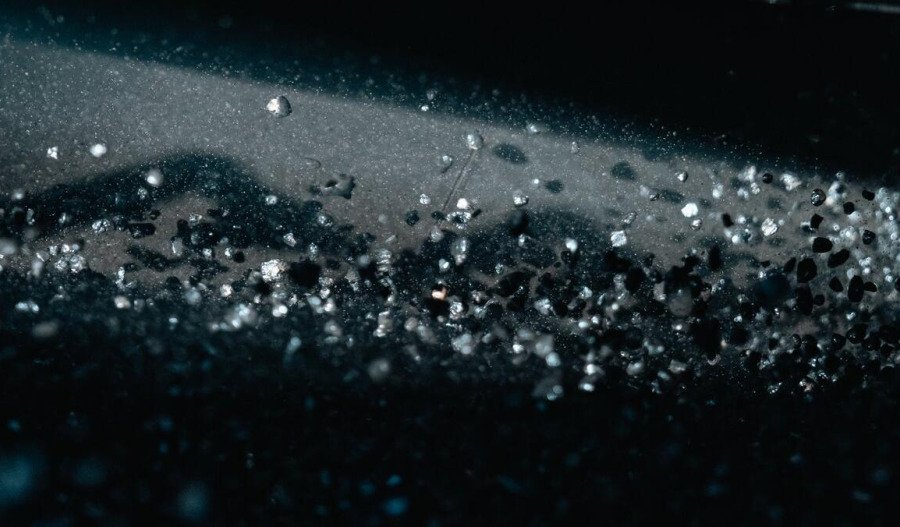The battery metals market focus has quietly shifted in 2025 so far, with nickel overtaking lithium as the most valuable raw material for electric vehicles.
This wasn't supposed to happen - lithium was meant to be the undisputed king of the energy transition, yet here we are, watching the metal everyone expected to phase out claim the throne from the so-called "white gold."
Yet the reversal tells us more about market fundamentals than years of industry cheerleading ever did.
Reality bites lithium
Lithium prices have fallen from $80,000 per tonne (t) in November 2022 to $8,450 in June 2025.
That's a 90% decline that's left more than a few producers wondering where it all went wrong.
Looking back, the reasons were pretty straightforward: producers ramped up output based on EV demand projections that simply didn't materialise as quickly as expected.
Reality had other plans; and the gap between hype and actual adoption rates created the oversupply we're seeing today.
Fastmarkets forecasts an oversupply of 10,000 tonnes this year shifting to a 1,500t deficit by 2026 - suggesting this might be just a temporary price pain.
But temporary doesn't help producers bleeding cash right now, which explains why major miners are still making big bets on recovery.
Rio Tinto's (ASX : RIO) acquisition of Arcadium Lithium for US$6.7 billion positions the miner as the largest lithium resource holder globally.
They're simultaneously investing US$2.5 billion to ramp up Rincon's from 3,000tpa to 60,000tpa lithium carbonate equivalent output - hardly the move of a miner expecting permanent decline.
CRU Group's numbers show the supply glut shrinking from nearly 150,000t lithium carbonate equivalent (LCE) last year to about 80,000t LCE at the end of this year.
Still, industry estimates indicate that US$514 billion of capex is required by 2030 just to meet projected battery requirements - assuming those projections prove more accurate this time around.
Lithium iron-phosphate (LFP) batteries for EVs have taken the world by storm recently, and China is leading the charge.
LFP batteries now represent nearly half of the global EV battery sector and account for 75% of China's domestic use.
That's up from basically nothing five years earlier - the kind of technology shift that reshapes entire industries overnight.
LFP battery cell prices in China fell 51% to $53 per kWh, compared to the global average of $95/kWh.
The cost advantage is obvious, but there's a catch that recyclers are already worrying about.
"LFP poses a huge challenge to recyclers because there are not these expensive materials inside the batteries," explains Nuria Gonzalez-Garcia of Betteries.
No nickel, no cobalt - which means recycling economics just got a lot more complicated for an industry banking on material recovery.
The USA maintains LFP at less than 10% market share, largely because import tariffs on Chinese-produced batteries create artificial preferences for alternatives.
Nickel's resilience
Nickel maintains its value through premium applications that still need the energy density lithium iron-phosphate (LFP) can't deliver.
Looking at the numbers, and terminal lithium deployment in EVs totalled $2.15 billion globally, whereas nickel reached $2.20 billion according to Adamas Intelligence.
Each EV battery contains an average of 25.3 kilograms of nickel - and that's not changing anytime soon for premium applications.
Nickel-manganese-cobalt (NMC) batteries deliver 240 Wh/kg compared to LFP's 180 Wh/kg, making them necessary when range actually matters to consumers.
The world's top nickel miner is now Indonesia - which produces about half of the world's demand - with volumes hitting 1.58 million tonnes (Mt) this year following a whopping 48% growth in 2022.
But here's where it gets interesting: Indonesia's government is considering reducing mine quotas by 40% in 2025.
That would slash volumes from 272Mt to 150Mt - the kind of supply discipline missing from this play.
Wood Mackenzie's Adrian Gardner sees a "10%-12% increase in demand for primary nickel in 2025, almost double production growth" - suggesting the supply-demand balance might finally be shifting.
Indonesia eyes critical mass
And Indonesia isn't just mining nickel anymore - they're building an entire EV ecosystem and forcing foreign miners to play by their rules.
The approach seems to have some merit as they've attracted US$29 billion in EV-related investments by linking raw material access to domestic processing requirements.
The country established Southeast Asia's first EV battery manufacturing facility in 2024, capturing 75% of regional investment in the process.
South Korea's LGES will produce nickel-rich NCMA battery cells containing 90% nickel content - proof that high-nickel chemistry isn't going anywhere for premium applications.
Is this resource nationalism done right? To capture value-added processing instead of shipping raw materials overseas for someone else to process?
Australia might benefit from taking notes.



